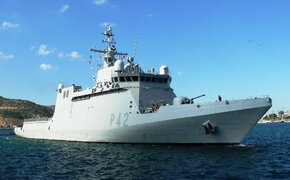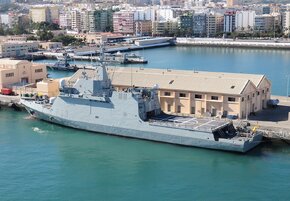Maybe - but it’s a risk decision.I've been thinking, and this is dangerous...
LBMS is almost at decision time.
The logistics nightmare of getting an LBMS missile battery + the required air and ground defence and sensors/comms, + the (I'm totally guessing) 250 minimum personel, into position, in a relevant littoral location, without being detected
vs
a couple of missile corvettes each with 50 crew, sensors/ comms, 8 NSM, RAM, no need for slow LSTs or fat C17s with fighter escort.
Hmmm, just thinkin'.
Why MUST a ground combat element have air defence and ground defence? Why must it have sensors?
Reducing footprint reduces signature, reduces logistics, and reduces the the value of an opponent targeting. Friendly use of Offboard targeting (which such a concept almost certainly needs because of radar horizon) reduces reliance on easily detectable EM emissions.
Despite the constant assertions, even China does not have unlimited magazine depth - small footprint, highly mobile, reduced signature could easily be more survivable than a small TG.
If think about the reciprocal - would you rather be looking for a 250+ person footprint with NASAMs, Radars, an infantry company etc… or a much smaller footprint with a few trucks? Which one are you more likely to employ some of your long range fires against?




